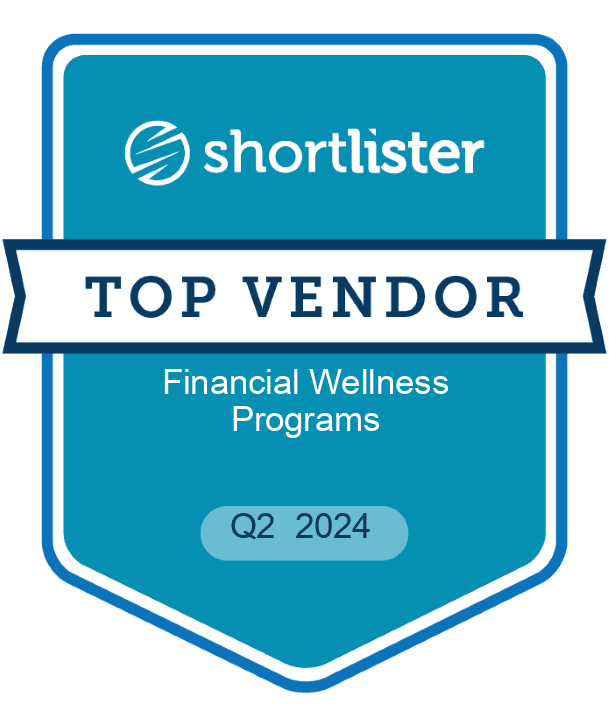Why Student Loans and Retirement Cripple Each Other
Student loans and retirement are two major financial topics at the heart of employees’ financial concerns. Unfortunately, they may have a crippling effect on each other and may cause a ripple that negatively affects other financial goals and challenges, too.

Student loans and retirement are two major financial topics at the heart of employees’ financial concerns. Unfortunately, they may have a crippling effect on each other and may cause a ripple that negatively affects other financial goals and challenges, too.
Who is affected?
Student debt is not just a young person’s issue. Adults in every age group, from 20-somethings to retirees, carry student loan balances. According to the Federal Reserve, more than 43.5 million borrowers collectively owe over $1.7 trillion in federal student loan debt as of 2024.¹
Here’s a snapshot of the average student loan debt by age group²:
- Ages 25–34: $33,173
- Ages 35–49: $43,438
- Ages 50–61: $45,159
- Age 62 and older: $41,269
Even adults approaching or already in retirement often still carry significant education debt. In fact, the number of borrowers aged 62 and older has quadrupled in the last decade.
How is it affecting employees?
When employees are focused on paying off student loans, they often scale back retirement contributions just to keep up with debt. This trade-off means they may miss out on employer matching funds, compounding investment growth, and early savings opportunities.
With retirement savings put on hold, they may struggle to meet future needs. If an unexpected expense arises, like a medical emergency or a child’s education, they may resort to early withdrawals from limited retirement savings, triggering taxes and penalties.
And it doesn’t stop there.
Carrying high levels of student debt often leads to the following:
- Increased financial stress
- Difficulty covering day-to-day expenses
- Persistent credit card debt and high-interest payments
When student loans become overwhelming, other financial responsibilities tend to follow suit.
How is it affecting you, the employer?
If you have employees who are overwhelmed by financial concerns, you’re likely dealing with consequences that seriously hurt the bottom line. Employees who have financial issues like student loans are more likely to be distracted and less productive at work.
What can you do?
Any financial concern, if left unattended, can cause major damage, and goals without action will probably never happen, so how do you tackle the issue before it becomes a problem for your workforce and your business?
Give your employees the opportunity to engage in a financial well-being program that can help them do the following:
- Establish a financial foundation by strengthening financial practices
- Determine current challenges and financial goals
- Create and implement an action plan
Through the My Secure Advantage (MSA) financial well-being program, employees can work one-on-one with a Money Coach and a whole team of specialists who carry multiple financial credentials and who can help them with virtually any financial topic. They also get access to online resources like a personalized digital platform with their goals and action plan, as well as a financial library, calculators, educational videos, personal financial management software, and more.
Real-Life Examples
Sarah entered the MSA program (offered by her employer) with $80,000 in student loan debt and another $20,000 in credit card debt. Her Money Coach, Dave, helped her create a budget and consolidate her student loans under a federal loan program that could allow her to be debt free in less than ten years. Effectively addressing her debt opened new doors for her: “I have savings for the first time in my life! I have around $3k in my savings account!!! Also, I saved up enough money to move into a new (and better) apartment (putting down security and 1st month, no worries) and to buy a new car! These accomplishments are directly related to working with Coach Dave!”
Anthony wanted to retire in ten years, but he was anticipating very little help from Social Security, and he didn’t have a pension. Through his employer, he got access to the MSA program, where he started working with a personal Money Coach and Retirement Specialist. His coach helped him determine how much income he might need in retirement, and how much his current retirement savings could amount to in the future. Anthony decided to increase his 401(k) contributions, and he opened a Traditional IRA for additional savings. Now, he’s more on track to retire comfortably.
Hundreds of employees like Sarah and Anthony use the MSA program each day and see amazing results. And they are truly grateful that their employer offers such a benefit:
- “I noticed that my employer offered [MSA] services through its employee assistance program…. It turned out to be one of the best phone calls I’ve ever made.”
- “The bottom line is that this service – having your [Money Coach] available to help over a 90-day period – is every bit equal in benefit and importance to the health benefit my employer offers.”
- I know that I am in a better position since I’ve used the service. I continue to tell everyone what a great service MSA provides. I was also happy to know that my company provided this service for me…not many can say they have a Money Coach.”
Help keep financial concerns from negatively affecting your workforce and your bottom line. Talk to an MSA Customer Success Manager today by calling 888-724-2326.
__
¹ Federal Reserve. (2024). Quarterly Report on Household Debt and Credit. https://www.federalreserve.gov/publications
² Student Loan Planner. (2024). Student Loan Debt by Generation. https://www.studentloanplanner.com/student-loan-debt-by-generation/
Information provided in this article is for informational purposes only and is not intended to offer specific personalized investment, financial planning, tax, legal, or accounting advice. We recommend that you consult an attorney, tax advisor, or accountant regarding your unique circumstances.
My Secure Advantage, Inc. or any of its representatives do not endorse any of the websites or company names listed here.
Testimonials were provided by members of MSA. They did not receive compensation of any kind for their statement.
More Like This
Like many Americans, Ariel was living paycheck to paycheck, and she found it harder when transitioning to a single income. With a broken relationship, student loans, surgery, and the end of a lease, the emotional distress certainly wasn’t helping. Luckily, Ariel found hope and support through the MSA Financial Wellness program, so she could transform […]
Employee Assistance Programs (EAPs) are well known for their abuse counseling services amongst other health, work and life-related issues, but perhaps one of the most utilized benefits and well-kept secrets is their financial counseling component. Why is financial counseling included? According to numerous studies, finances are the number one stressor in America, lying at the […]
Employee Benefit News (EBN) recently published a slideshow entitled the “8 benefit trends to watch for in 2016.” The first trend is financial wellness, and rightly so, considering that it can ensure success with all the other trends filtering through the workplace. Take a look at this year’s hot topics according to EBN, and why […]
Did you know that one million employees miss work each day due to stress?1 If each of those workers earned a minimum wage of $8.50 an hour and worked eight hours a day, that would mean each day 68 million dollars go down the drain because of stress. And that’s just from workers who call […]

